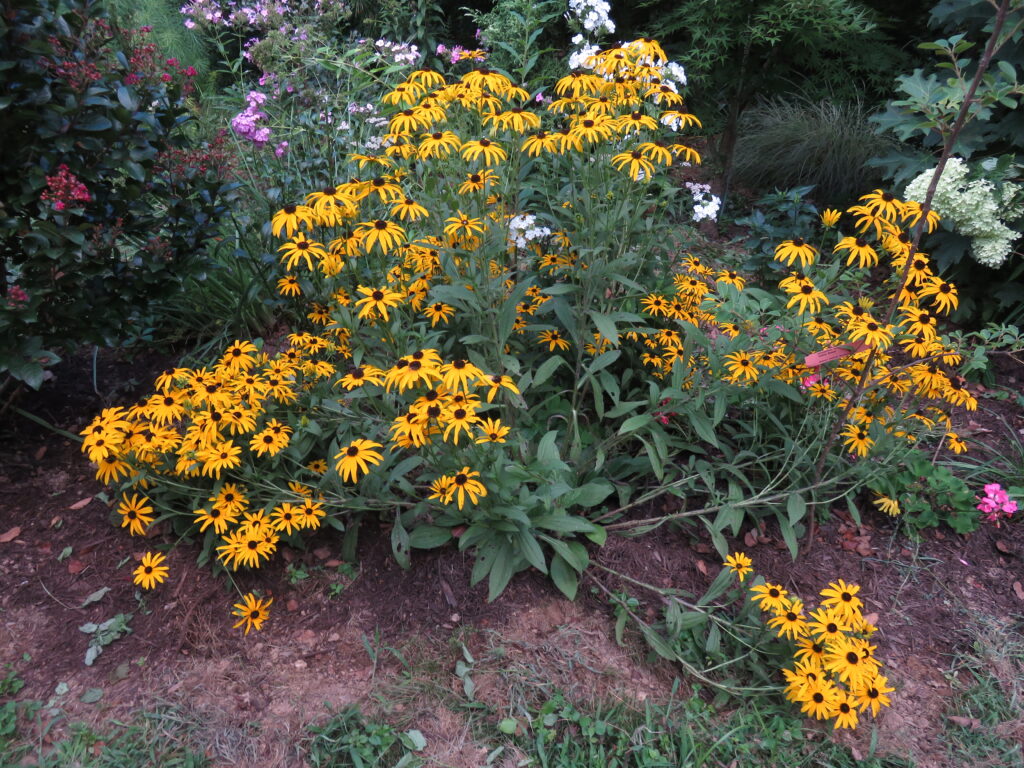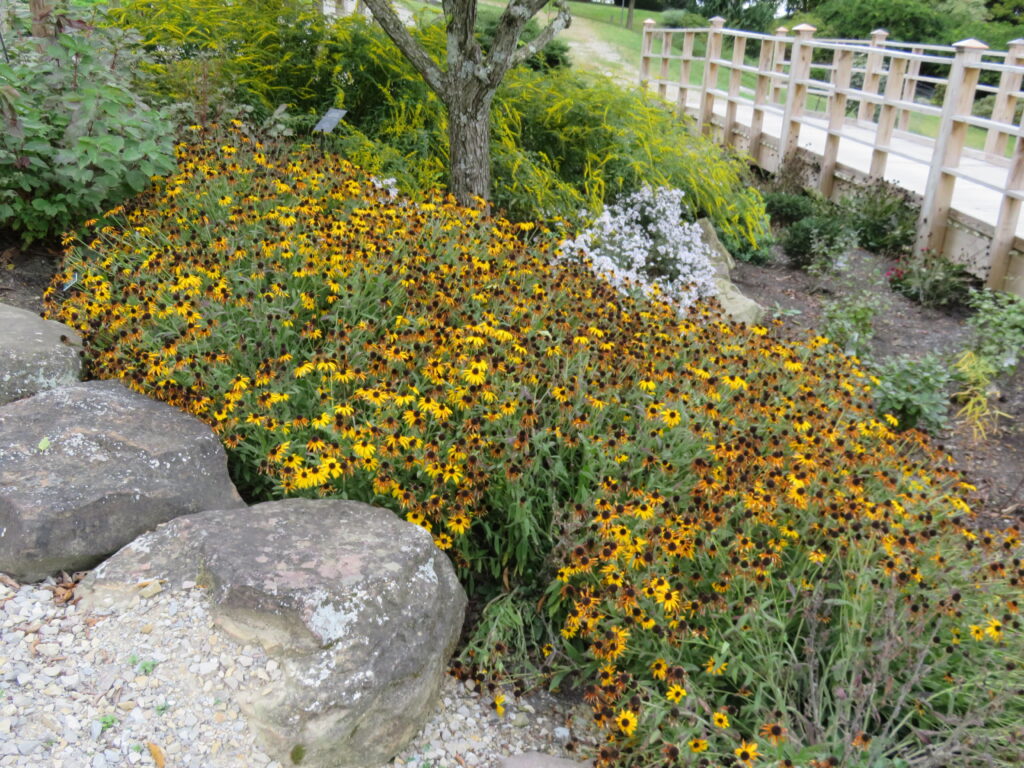
For 2023, three leading organizations, All-America Selections, National Garden Bureau and Perennial Plant Association, have awarded a cultivar of black-eyed Susan their highest plant award in the U.S. For the U.S plant Industry this is the first time ever.
Currently, garden interest in rudbeckias is at an all-time high. All-America Selections judges evaluated ‘American Gold Rush’ for three years and noted how easy it was to grow and is an exceptional perennial as well. The variety was very attractive in the perennial garden with nice full bloom coverage late in the season.
‘American Gold Rush’ is a top garden performer. It is full of flowers by mid-summer and expect a long season of dazzling color right up to autumnal frosts. Its narrow 2-inch wide, hairy green foliage is resistant to Septoria leaf spot – a nasty fungal disease that causes unsightly black spotting and premature seasonal decline on some rudbeckia varieties. It’s a reliable hardy perennial and a stunning focal point in perennial borders and meadows as well as being brilliant when massed in public or corporate landscapes.
In the world of perennials rudbeckias are very easy for TN /VA gardeners to grow. Rudbeckias are native to much of North America. Rudbeckias are pollinator friendly and there are many new varieties to try.

‘American Gold Rush’ is a compact hybrid cultivar, only 24 inches high compared to the slightly taller ‘Goldsturm’. Bright, yellow-gold flowers cover the plant from July to September and attract lots of pollinators. Black-eyed Susans grow in average, moist, well-drained soils in full sun, although plants will tolerate partial sun (4 hours/day). New plantings prefer supplemental irrigation during dry spells. Established plants are more drought tolerant. Good air circulation is best, so don’t crowd plants together. Deadheading is not necessary as this award-winning cultivar blooms almost continuously into the first fall frost. Plants slowly spread via rhizomes. (Zones 3-9)

 Posted in
Posted in 
